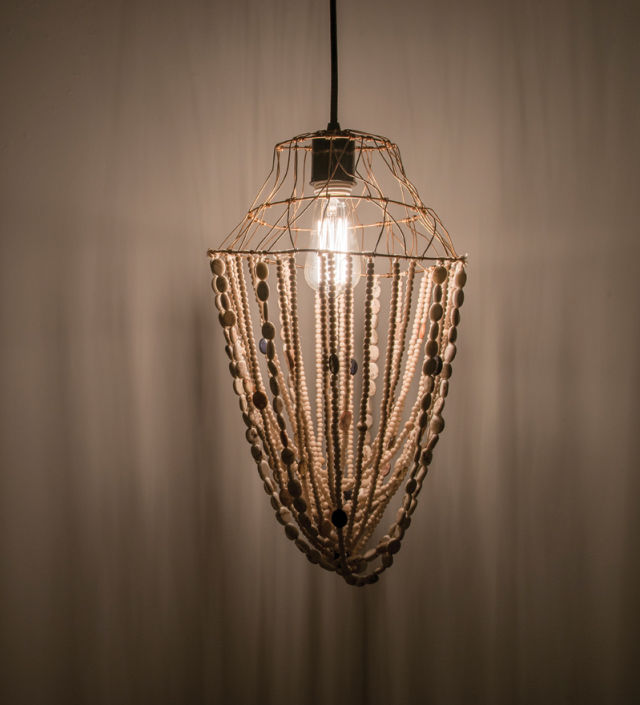How to Light Your Home

Hanging cylindrical lights with kraft-paper shades are a space-saving option for any room.
Photo courtesy Grey Pants
Lighting is often an afterthought for homeowners and renters, especially when hardwired systems solve the immediate need: Flip a switch and, voila, let there be light! But a few well-placed lamps can dramatically change the look and feel of a room. Three local experts illuminate new possibilities that don’t require tearing up the walls.
The Experts
- Jeri Warlick, Lighting and jewelry artist
- Seth Grizzle, Cofounder and creative director at Graypants
- Rich Schneider, General manager at Harold's Lighting
Direct the Light
According to Rick Schneider, how a lamp projects light—not just where a lamp is placed—can make or break a space. Light in an entertainment room should flank the television on the left and right with lights that cast upward, like torchiere floor lamps, as to not cause glare. Contrary to popular belief, a simple table lamp is not suitable for reading. “Light hitting your eye through a lampshade actually distracts the eye,” says Schneider. A proper reading lamp “directs light downward onto your reading surface” and should be coupled with other ambient lighting in the room, like a drop pendant with a paper shade.
Start Soft
“Really subtle touches can impact a space dramatically,” says Seth Grizzle, who suggests restraint when testing new light in a room, since you can always add more if needed. Avoid overusing recessed lighting, the bright hardwired bulbs punched into the ceilings of many homes and apartments. Consider portable light sources instead—like hanging lights, table lamps, or floor lamps—and experiment with how light plays around a particular room.
Task and Ambient Lighting
Task lighting, as the name implies, projects light for a certain activity, like cooking. These setups should flood a space with bright light, “but you don’t need it to be an operating room,” says Grizzle. So balance harsh task lights with something ambient designed to bounce off a surface instead of project onto it. Undercounter lights and cove lighting—LED strips hidden in molding or where wall meets ceiling—are contemporary options for kitchens and bathrooms.
Buy a Drop Pendant

Courtesy Jeri Warlick
Pendant fixtures, or simple bulb-on-a-cord lights, are inexpensive options with tons of customization potential, says Jeri Warlick. The jewelry maker turned lighting artist creates custom cages for these fixtures, which plug into walls and can be hung over dining room tables, in bedroom corners, even entryways. “Want a simple wire fixture basket? Or something more ornate? Drop pendants are very versatile,” says Warlick. But even if going handmade is not within budget, many lighting specialists can attach existing shades and cages to these fixtures. A drop pendant, shade, and custom attachment can easily run under $100.




